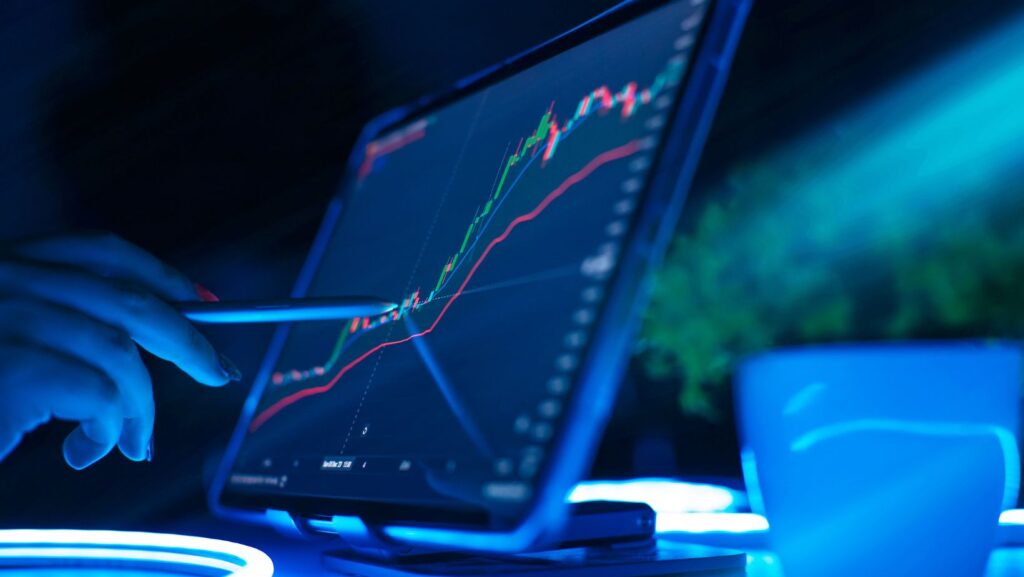When dealing in the financial markets, the two most widely traded products are CFDs (Contracts for Difference) and futures contracts, which are used to speculate on the price of an asset without owning the underlying instrument. Both allow traders to benefit from price swings in stocks, commodities, indices, and currencies, but the way they are structured and the risks they carry can differ sharply.
CFDs: Trading on Price Movements
A contract for difference (CFD) is an arrangement between a trader and a broker that lets you profit from price changes without actually owning the asset. This can include anything from currencies and stock indices to oil, gold, or even cryptocurrencies. The outcome depends on the difference between the opening and closing prices of your position.
Key points:
- Leverage: lets you open larger trades with relatively small capital.
- No fixed maturity: unlike futures, you can close your CFD position whenever you choose.
- Broker-mediated: trades are over-the-counter, with your broker acting as the counterparty.
- Access to many markets: forex, equities, commodities, indices, and crypto.
Still, CFDs are risky. Data from ESMA suggests that 70–80% of retail traders lose money with them, which highlights why risk control and proper education are essential.
The Psychology of Leverage

One area that often separates successful traders from beginners is how they approach leverage. With CFDs, the temptation to use maximum available leverage is strong, since small moves can quickly turn into noticeable profits. But that same multiplier effect works against you when markets shift unexpectedly. Futures contracts also use leverage, though in more standardized proportions, and the margin rules tend to force discipline.
Because CFDs are handled through a broker Forex setup, the terms and execution can differ from one platform to another, while futures remain bound to centralized exchanges. This contrast in the trading environment is just as important as the contract design itself, and it often shapes how each instrument fits into a trader’s overall strategy.
CFDs vs Futures: A Side-by-Side Comparison
| Feature | CFDs | Futures |
| Leverage | High (up to 30:1 retail) | Medium (10–15%) |
| Contract Size | Flexible | Standardized |
| Expiry Date | None | Yes |
| Trading Venue | OTC (via broker Forex) | Centralized Exchanges |
| Regulation | Broker-dependent | Regulated (CFTC, etc.) |
| Cost Structure | Spread + Overnight fees | Commission + Tight Spread |
| Risk Profile | Higher due to leverage & broker role | Lower counterparty risk |
Choosing What Fits Your Strategy
Whether to trade CFDs or futures is ultimately in the hands of the individual and his or her trading personality and financial capacity. CFDs might be more suitable in case you are the type of trader who lives on fast market fluctuations and likes flexibility. They also need less capital to trade, and there is no fixed contract size or time, which makes them affordable to traders who want to trade frequently and with small amounts of capital. However, this convenience is also associated with a bigger leverage and, therefore, risk.
However, futures would be more appropriate for you, should you be more methodical and long-term oriented. They have standardized terms, they are traded on regulated exchanges, and are, in general, far more transparent and protective in that there are margin controls and supervision. They need more start-up capital and a better knowledge of how the different markets are organised, but pay back with patient approaches.
Your risk tolerance, capital base, and the flexibility or structured approach you want in your daily trading regime will be the ultimate decision.
Risk Management and Regulation
It is essential to know the importance of regulation. The counterparty risk is that in CFDs, the counterparty is the broker. On the other hand, futures are settled via a clearinghouse, and hence this concern is mitigated. CFDs have fewer regulations, and the quality of your experience is determined by the reliability of your broker in Forex. Futures are very regulated, with daily settlements and margin calls that cushion market participants.
Don’t Follow Hype – Trade What Suits You
Popularity is not what is right. It is what is right in your trading plan, risk tolerance, and resources. The CFDs are flexible and accessible, but they are riskier. Futures are more disciplined and structured, lowering long-term costs, but require more of a commitment. Whichever you like, be informed and keep track of each trade.



